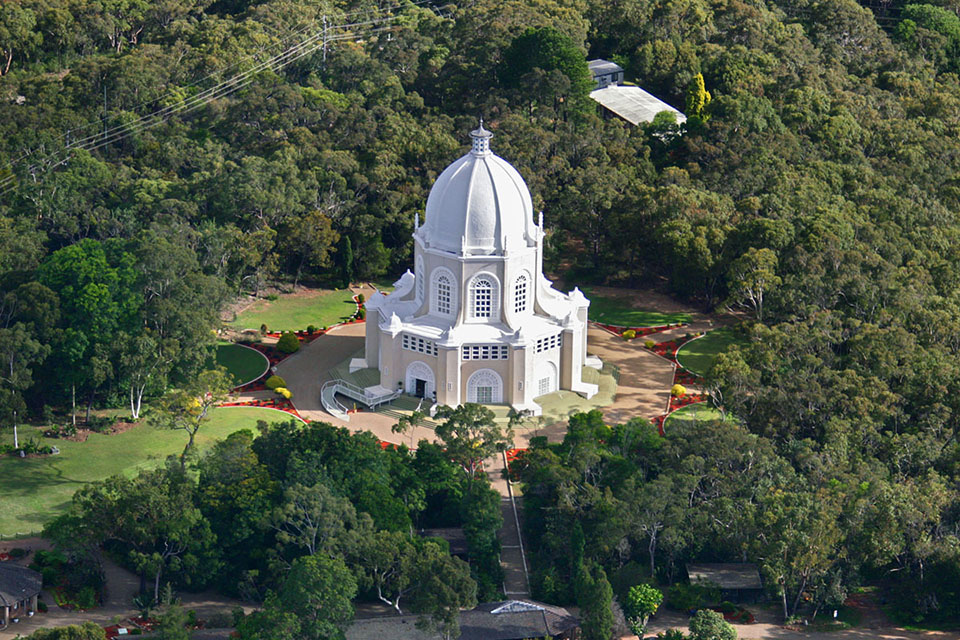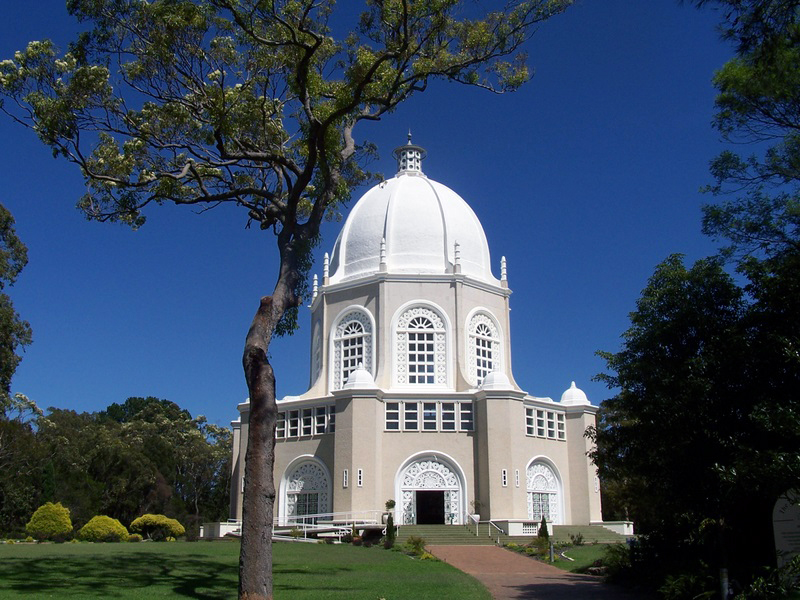The Dictionary of Sydney was archived in 2021.
Baha'i House of Worship
Citation
Persistent URL for this entry
To cite this entry in text
To cite this entry in a Wikipedia footnote citation
To cite this entry as a Wikipedia External link
Baha'i House of Worship
Freedom of religion is guaranteed by law in Australia, and in Sydney many religions are practised.
The Bahá'í faith was founded in 1863 by Baha'u'llah, a Persian follower of an earlier prophet, known as the Bab, who had been executed in 1850. After persecution and exile, Baha'u'llah laid out a vision 'of the oneness and unity of humankind'. He provided social and spiritual teachings as foundations of achieving this goal, and asserted that 'the well-being of mankind, its peace and security, are unattainable unless and until its unity is firmly established'. His teachings struck a chord with contemporary times, and by the early 20th century there were Baha'i communities in Europe, North America, South-East Asia and the Indian subcontinent. Baha'i have come from nearly every national, ethnic and religious background, and although their numbers are small, they cover a wide geographic spread.
The Baha'i faith was brought to Australia by Clara and Hyde Dunn, an English-Irish couple from America, who arrived in Sydney in April 1920. Hyde Dunn gave talks about the Baha'i faith as he worked his way around the Australian continent as a travelling salesman. Gradually small Baha'i communities grew up in different centres around the country. Among the first Australians to become Baha'i was Oswald Whitaker, a Sydney optometrist, late in 1922.
In Sydney, [media]the Baha'i house of worship is located on Mona Vale Road, on the highest point above the northern beaches of Sydney, and it has been described by Sydney University architectural historian Jennifer Taylor as one of four major religious edifices constructed in Sydney during the 20th century. It was designed by Sydney architect John Brogan, from an initial concept by American Baha'i architect Charles Mason Remey (who later broke with mainstream Baha'i), and building began in April 1957. Construction took four years, and cost approximately £150,000. The building was dedicated on 17 September 1961.
Like all Baha'i houses of worship around the world, the building [media]is nine-sided, which Baha'i teaching regards as a symbol of the unity of the world's major religions. Innovative techniques were employed in its construction, including the use of a helicopter to place the lantern on top of the completed dome, 38 metres above the ground. Local hardwoods are featured inside the building, which [media]seats 600, and it is surrounded by extensive native gardens and 9 hectares of grounds. In 2005–06 the temple was threatened by bushfire, but was not damaged.
Public services are held in the house of worship on Sundays and Baha'i holy days, including readings from the sacred writings of major religions and music sung unaccompanied by the Baha'i Temple Choir.
The gradual growth of the Baha'i community in Australia was accelerated with the resurgence of persecution of Baha'is in Iran that followed the 1979 revolution there. In March 1982, the Australian government established a special humanitarian assistance program under which Iranian Baha'i refugees were eligible to migrate to Australia. In subsequent years, several thousand Iranian Baha'i people came to Australia, enriching the size and diversity of the Australian Baha'i community.
References
'House of Worship', Australian Baha'is website, http://www.bahai.org.au/, viewed 14 January 2009




